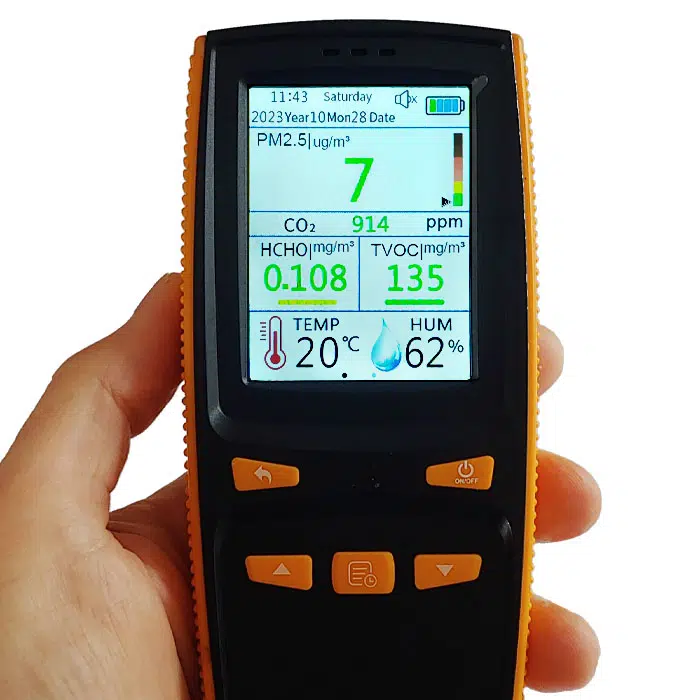Monitoring and measuring air quality in group rooms such as schools, daycare centers and medical facilities is of great importance for health reasons as well as well-being aspects and to improve performance. Regular air quality checks with several people, such as classrooms, waiting and patient rooms, daycare group rooms, meetings, workspaces and offices, allow quick conclusions to be drawn to take appropriate measures to quickly bring the air quality back into the “green zone”. This can be done through timely and correct ventilation or by using air purifiers.
health of those present
Good air quality is crucial for the health and well-being of the people who spend time in these spaces. Poor air quality can lead to health problems such as respiratory infections, allergies and other respiratory diseases. Through regular measurements, potential dangers can be identified and eliminated at an early stage.
Prevention of infections
In medical facilities, air quality is particularly important to prevent the spread of infections. Poor air quality can promote the transmission of pathogens. Monitoring air quality can help minimize the spread of infections.
Productivity and learning ability
In schools, daycare centers and offices, air quality can affect the concentration, learning ability and general productivity of students, children and employees. Good air quality ensures a pleasant and improved learning and working environment.
Comfort and well-being
Good air quality contributes to the general well-being and comfort of the people who stay in these spaces. It promotes a pleasant indoor climate and can help prevent symptoms such as headaches, fatigue and irritation of the respiratory tract.
Effects on living and working spaces
Good air quality also helps reduce environmental impact. This is important in terms of both the health of the environment and the long-term sustainability of buildings and facilities. Mold formation and overheating and underheating should be avoided.
Legal requirements
By regularly monitoring and measuring the air quality in group rooms, potential problems can be identified and resolved at an early stage. This not only promotes the health and well-being of those present, but also ensures legal compliance and creates a comfortable, productive and safe environment for everyone.





